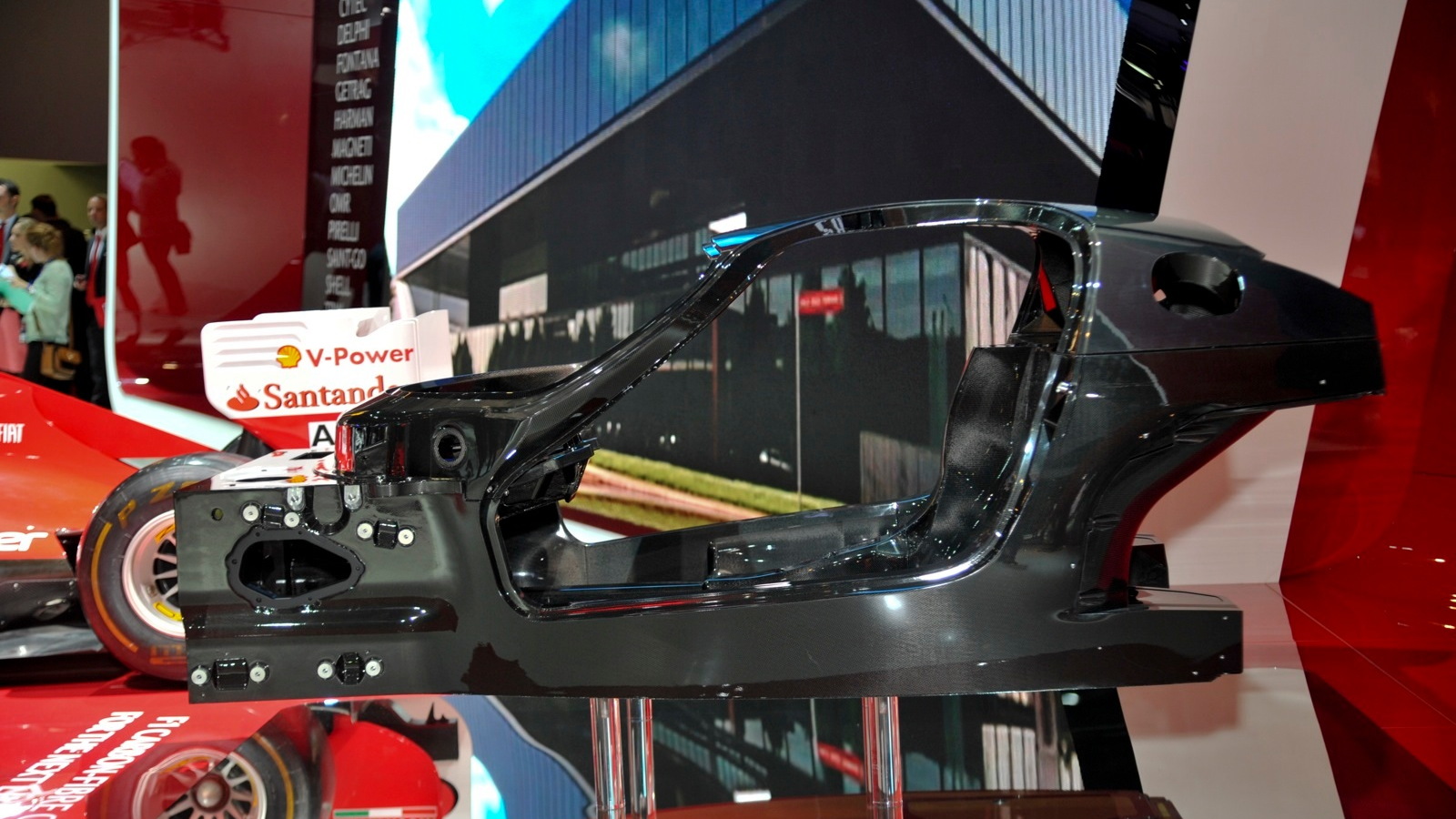That carbon fiber tub, known professionally as a monocoque, is said to form the backbone of the Ferrari F70, successor to the storied Ferrari Enzo. Based on lessons learned from Formula One racing, the carbon composite chassis could be most complex that Ferrari has ever developed; it’s certainly the most complex ever used in a road-going Ferrari.
Common methods of industrial carbon fiber production were discounted for the F70, as techniques such as Resin Transfer Molding did not meet standards for quality and functionality established by Ferrari.
Four different types of carbon fiber are used in the construction of the tub, each hand-laminated before being cured in an autoclave. The main structure is crafted from T800 carbon, overlaid with a unidirectional carbon-fiber tape known as T800UD for added strength.
The structural underbody and cross-member are created from M46J carbon fiber, known for its very high tensile strength, Doors, however, use T1000 carbon fiber for its impact absorption, as this is the same material used in the nose assembly of F1 cars.
To ensure that the carbon fiber tub is protected from road debris, Kevlar (the same material used for bullet-proof vests) is used in conjunction with carbon fiber on the undertray.
The net result is a chassis some 20-percent lighter than the one used on the Ferrari Enzo, but with an increase in torsional rigidity of 27-percent and an increase in beam stiffness of 22-percent. Lighter and stiffer translates into faster and better handling, which should give the F70 some truly impressive capabilities.
Ferrari debuted the F70’s hybrid drivetrain at this year’s Beijing Auto Show, so it won't be too much longer before we see the entire car on display.


